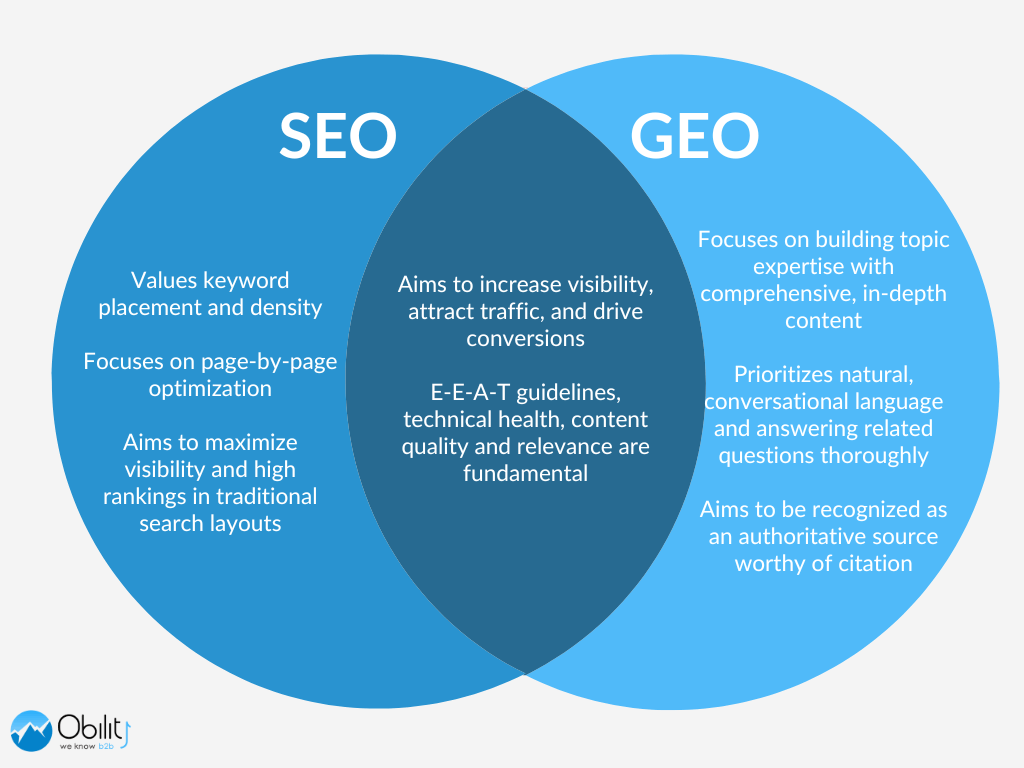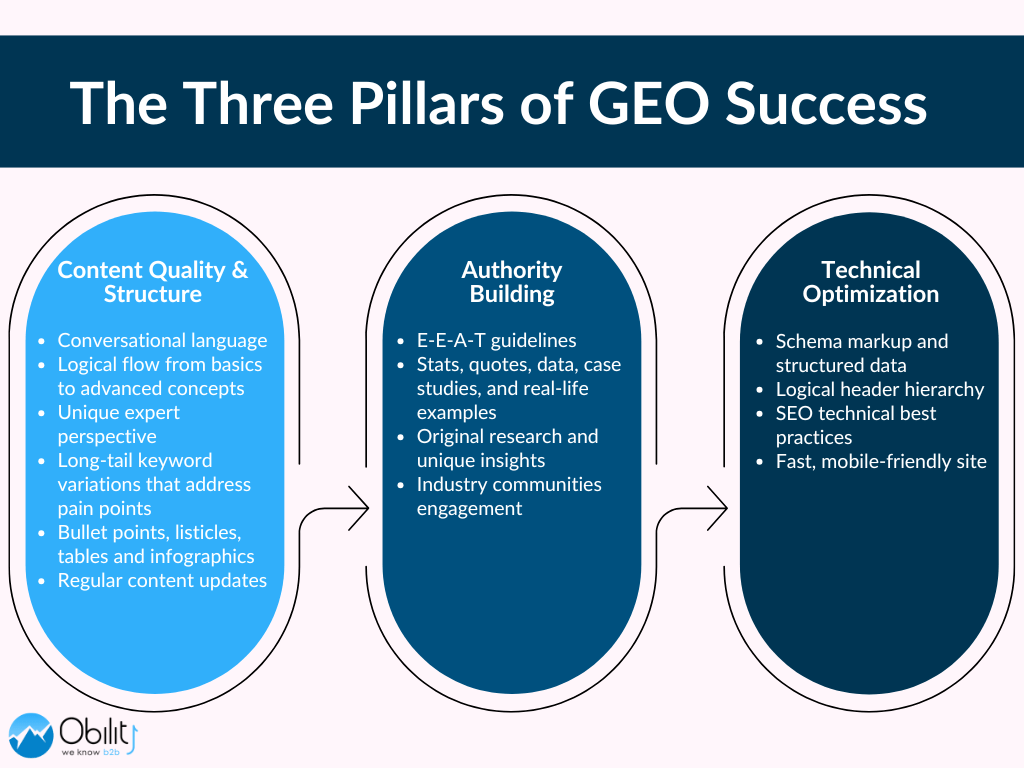Remember when Google was the only game in town for finding anything online? The tech giant dominated search for years and businesses leveraged Search Engine Optimization (SEO) to stay on its radar. But an unprecedented revolution in digital marketing is underway — AI search is changing everything.
Remember when Google was the only game in town for finding anything online? The tech giant dominated search for years but an unprecedented revolution in digital marketing is underway — AI search is changing everything.
Tools like. ChatGPT, Perplexity, Gemini (aka AI Overviews), and Copilot have sparked a major shift in how people find and engage with websites, forcing businesses to rethink their entire approach to online marketing.
So how do you succeed in this new reality? If you want to stay visible as AI takes over more of the search landscape, you need to understand how to optimize for these new systems. While traditional SEO still has its place, there’s a new player in town: Generative Engine Optimization (GEO). In this course, Obility will walk you through 5 different modules to understand and master GEO.
- Module 1: what is GEO and how does it work (you’re here!)
- Module 2: the similarities and differencies between GEO and SEO
- Module 3: an overview of AI search engines
- Module 4: the GEO best practices
- Module 5: which GEO KPIs to focus on and how to track GEO success
So, What is Generative Engine Optimization (GEO)?
Think of GEO as the process of teaching an AI assistant to understand and share your content effectively. These AI tools don’t just show links — they actually read and understand users’ questions, then create complete answers by pulling information from different sources. While regular SEO helps people find your website on Google, GEO is about making sure your content stands out and gets used by AI tools like ChatGPT and Gemini when answering questions.
For example, if someone asks ChatGPT about the best HR software, you want your HR softwarereview to be compelling and structured in a way that makes it likely to be included in ChatGPT’s response.
Key Takeaways
- GEO teaches AI tools to synthesize and and share your content in a conversational tone
- AI creates answers by synthesizing multiple sources
- Content must be structured for AI tools comprehension
- Growing audience shifting from search engines to AI tools
- Traditional SEO-only strategy risks missing new users
Understanding Generative Engines
To appreciate the power of GEO, it’s essential to understand how generative engines function. These sophisticated systems combine the capabilities of large language models (LLMs) with traditional search functionality to deliver a more intelligent and nuanced search experience.
Here’s what happens behind the scenes:
- First, the AI figures out exactly what you’re asking — even if you phrase it casually like you’re talking to a friend.
- The AI toolsearches through the vast trove of online content and picks out the most reliable sources.
- Now, the real magic happens: instead of just matching keywords, the AI actually understands the content it finds. It pulls relevant information from different sources and weaves it together into a clear, complete answer. To keep things honest, it tells you where each piece of information came from.
Key Takeaways:
- AI understands natural language queries and comprehends content beyond keyword matching
- AI synthesizes information from multiple sources and creates coherent answers while citing sources
Why GEO Matters Now
AI search is taking off faster than anyone expected — one in 10 users in the U.S. now rely on generative AI as their default tool for online searches. ChatGPT alone has over 300 million weekly users, and newer players like Perplexity AI have seen their traffic jump by 858% in just a year. What’s fascinating is that 70% of users already trust AI search results.
The Impact of AI on Traditional Search Traffic
Traditional search is experiencing the fallout from this massive and accelerating shakeup. Even Google’s iron grip is slipping — their market share recently dipped below 90% for the first time in nearly a decade. Gartner predicts a 25% drop in regular search volume by 2026, with organic traffic potentially falling by half as AI search takes over.
For businesses, this means thinking differently about how to stay visible when fewer people visit websites for basic information. The strategy of optimizing for Google clicks needs to evolve for an AI-first world.
Competitive Landscape Changes
This shift is similar to the early days of the internet, when businesses had to scramble to build websites or risk becoming invisible. Early adopters of GEO are already gaining an advantage that will undoubtedly increase over time and AI search opens doors for smaller players to compete effectively by focusing on quality content. This levels the playing field — a small business with expert, well-structured content can now outperform bigger competitors with bigger budgets.
Let’s take a closer look at how the game is changing.
Key Takeaways:
- 1 in 10 U.S. users now use AI as default search tool
- ChatGPT has 300M+ weekly users
- 70% of users trust AI search results
- Google’s market share dropped below 90% for first time in a decade
- Organic traffic could fall by half as AI search grows
- Basic information searches hit hardest as AI provides direct answers
- Early GEO adopters gaining competitive advantage
- Smaller players can now compete against larger companies with bigger budgets
How GEO Differs from Traditional SEO
Where traditional SEO relies on keyword placement and technical optimization for individual web pages, GEO takes a more holistic approach, focusing on making content useful for human readers, which in turn makes it attractive to AI systems. Here’s a handy breakdown:
Traditional SEO prioritizes:
- Keyword placement and density
- Page-by-page optimization
- Targeting specific search terms
- Achieving high rankings in search results listings
- Optimizing click-through rates by crafting compelling meta descriptions
- Securing featured snippets and rich results
- Maximizing visibility in traditional search layouts
GEO focuses on:
- Comprehensive, in-depth content
- Building topic expertise
- Natural, conversational language
- Answering related questions thoroughly
- Recognition as an authoritative source worthy of citation
For example, a traditional SEO article about cloud computing would focus on using that keyword. A GEO article would explore cloud concepts, benefits, and real-world applications, so AI systems recognize it as an authoritative source that’s trustworthy enough to incorporate into their generated responses..
In a nutshell, the point of GEO isn’t just about ranking highly — it’s about creating content that AI systems recognize as valuable and authoritative.
User Intent Understanding
Another key difference between SEO and GEO is how these techniques understand what users want.
Traditional SEO is pretty mechanical — it matches close match or exact keywords and phrases. If someone searches “project management tool,” SEO focuses on using those exact words.
On the other hand, GEO must deal with the fact that AI can actually understand natural language and context. For the above example, GEO content would cover topics like how to meet project deadlines, keeping a team organized, following progress along the way, prioritizing action items etc. This makes it useful for AI systems answering hundreds of different questions about project management.
Key Takeaways:
GEO focuses on:
- Comprehensive, in-depth content that covers related concepts
- Topic expertise development
- Natural, conversational language
- Thorough question answering
- Citation-worthy authority
Where SEO and GEO Converge
While GEO is explicitly designed for AI-driven search engines, it shares many core principles with traditional SEO. Both aim to increase site visibility, attract targeted traffic, and drive conversions.
Content quality and relevance remain fundamental to both approaches. Creating high-quality, authoritative content that follows E-E-A-T (Experience, Expertise, Authoritativeness, and Trustworthiness) guidelines benefits both traditional search rankings and AI-generated responses.
Technical optimization is also equally important for both strategies:
- Fast-loading pages
- Mobile-friendly design
- Proper site structure
- Clean code help
- Internal and external links
All these help both search engines and AI systems crawl and interpret your content effectively.

The Three Pillars of GEO Success
As we’ve seen, the primary objective of GEO is to optimize your content in ways that make it more likely to be selected, understood, and featured by AI systems when generating responses. Success depends on three main factors:
1. Content Quality and Structure
- Content organization: great content organized logically, from basics to advanced concepts and include bullet points, listicles, tables, and infographics that is regularly updated
- Conversational queries naturally answering questions while delivering expert insights with a valuable and unique POV
- Long-tail keywords: optimize for long-tail keyword variations and solving reader’s pain points rather than trying to sell them something
- Content authority: cover topics thoroughly with real examples, statistics, quotes, and case studies
2. Technical Optimization
- Content organization:use schema markup and structured data to help AI systems process your content and use a content collections approach to build a logical site hierarchy with clear topic relationships
- Technical health:apply content, technical, and internal linking SEO best practices and keep your site fast and mobile-friendly
3. Building Authority
- Credibility: high-quality, unique, and authoritative content for AI search follows Google’s E-E-A-T (Experience, Expertise, Authoritativeness, and Trustworthiness) guidelines. Establish credibility by backing up claims with expert quotes and current data from respected sources that you cite and link to.
- Industry recognition: actively engage in your field’s online community, and show off any industry recognition or certifications on your website.

Measuring GEO Success
To measure the success of your Generative Engine Optimization (GEO) efforts, you need to change how you look at analytics. Traditional SEO performance indicators like keyword rankings and organic traffic are still important, but GEO requires new KPIs that match how AI uses content. Here’s how to measure if your GEO strategy is working:
AI Overviews and Citation
Track how AI systems use your content:
- How often you’re cited in AI answers
- How often you and your competitors appear in AI overviews
- How many of your target keywords are ranking in AI overviews
- What percentage of your keywords on page 1 are ranking in AI overviews
- How many AI overviews do you and your competitors rank in
User Behavior
Measure engagement across AI-referred visitors, including:
- Bounce rates
- Exit rates
- Session duration
- Number of pages viewed
- Conversion rate
Key Events
Measure user actions indicating an interest in your solution:
- Signing up for a newsletter
- Downloading a gated or non-gated asset
- Signing up for an upcoming webinar
- Asking for a demo
- Visiting a competitor or pricing page
- Reaching out to the sales team
How Obility Approaches GEO
At Obility, our GEO strategy starts with a rigorous audit ofhow AI systems currently interpret your content, evaluate your market position, and identify specific opportunities to increase your visibility in AI-generated responses.
Our implementation focuses first on building a strong technical foundation. We ensure your content is structured in ways that AI systems can easily understand and process and your website is in good technical health.Keyword research and content development then forms the heart of our GEO strategy. We carefully develop comprehensive, authoritative content that demonstrates real expertise while remaining engaging and readable. We incorporate expert insights, current data, and clear hierarchies that help AI systems recognize and reference your content as a trusted source.
We also take pride in helping you build lasting authority in your industry. Through expert collaborations and regular content updates, we work to establish your organization as the go-to source that AI systems consistently turn to when answering relevant queries.
From ChatGPT to Gemini to DeepSeek, the AI search industry is moving at break-neck speed, so success in GEO requires constant attention and learning. We continue to track how AI systems use your content across different platforms, measure visibility in AI-generated responses, and assess impact on your business metrics. This data drives continuous refinement of our strategies, ensuring your content improves in effectiveness as AI search evolves.
By combining expertise in traditional SEO with deep understanding of AI search behavior, we help clients go beyond just adjusting to AI-driven search — we position them to dominate it.

Now that you have a god understanding of GEO, let’s move on to module 2 and dive deeper into the similarities and differences between SEO and GEO.
